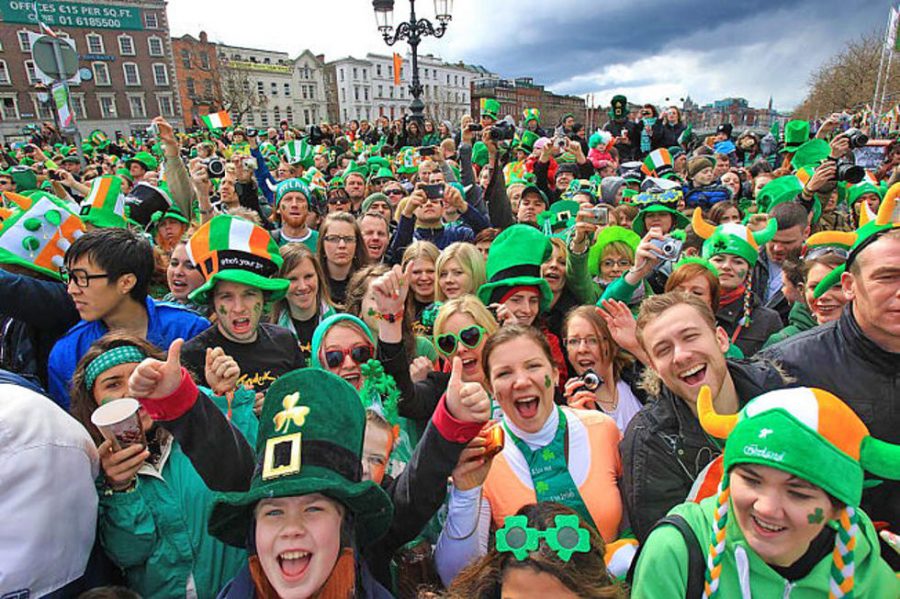The Origins of St. Patrick’s Day
March 30, 2020
One might recognize the festive holiday of St. Patrick’s Day for its green following, pots of gold, and ninety-nine cent beer at local Irish pubs, however, the origins of the holiday stray far from the jovial celebration so widely spread today. Saint Patrick was born in Roman Britain with the birth name of Maewyn Succat, yet he changed his name to Patricius after being anointed into priesthood. What shocks many is the reality in which Saint Patrick was not Irish, but that he was indeed British. Sixteen-year-old Maewyn Succat was kidnapped by Irish pirates in the early 400’s and served time as a slave in Ireland for six years until he escaped. While enslaved, Maewyn survived the grueling tasks of labor through the development of a close relationship with God. After escaping from the clutches of Irish pirates, Maewyn was soon recovered by the French and forced into a life of monasticism. Following years of imprisonment, Maewyn returned to his family in Britain and continued living a Christian lifestyle into his twenties.
Subsequently, Maewyn heard a voice urging him to return to Ireland and spread Christianity. Obliging, the young man voyaged back to the mainland, spreading Christianity for years to come. Young Maewyn accomplished many major feats including the upbringing of thousands of women into nunhood, the baptisms of an abundant amount of civilians, the ordination of new sons, the constructions of three hundred new churches, and at the end of it all, converted to priesthood himself. Patricius had been born. As many folklore stories spread rumoring the ‘wonders of Saint Patrick’, his ideas spread through Ireland rapidly. This is including Patricius’ most effective and widespread symbol; the shamrock. The meager three-leafed clover used by Patircius to teach the people about Christianity was commonly representative of the Christian Holy Trinity, (the father, son, and holy spirit).
Although not an official Catholic saint, Patricius is looked upon highly by all members of the Christian community. Saint Patrick was believed to have died on March 17th, 461 AD giving birth to the Irish day of celebration. Nonetheless, many of the traditional Irish customs performed by society on Saint Patrick’s day today have no relation to the origins of the holiday. Originally, Saint Patricks Day was celebrated in the 1700s by the Irish to memorialize the life of Saint Patrick, and the appearance of Christianity in Ireland. The holiday spread into the Americas as more European colonists immigrated overseas. Many Christians saw the holiday as an excuse to lift the restrictions of Lent, allowing civilians to eat and drink as much as they desired in celebration. It was not until the 1980s that drinking beer became one with the holiday as Budweiser created campaigns and commercials urging people to use the celebration as an excuse to let loose. Clearly, Budweiser’s efforts were very successful. The color green made its mark on the holiday due to its importance in the Irish revolution, distinguishing Irish soldiers from British soldiers. The green battle color which happened to be the same as the iconic shamrock gained popularity expeditiously, and eventually became the holiday’s mainstay color.
